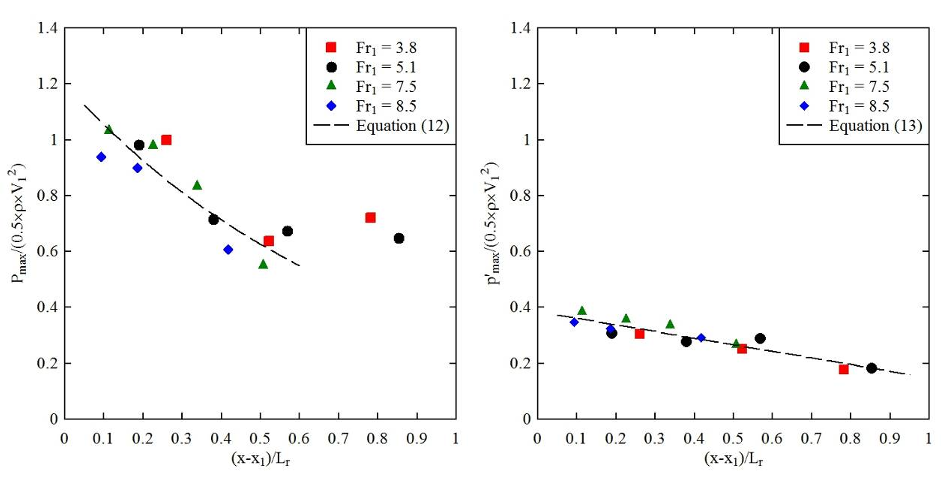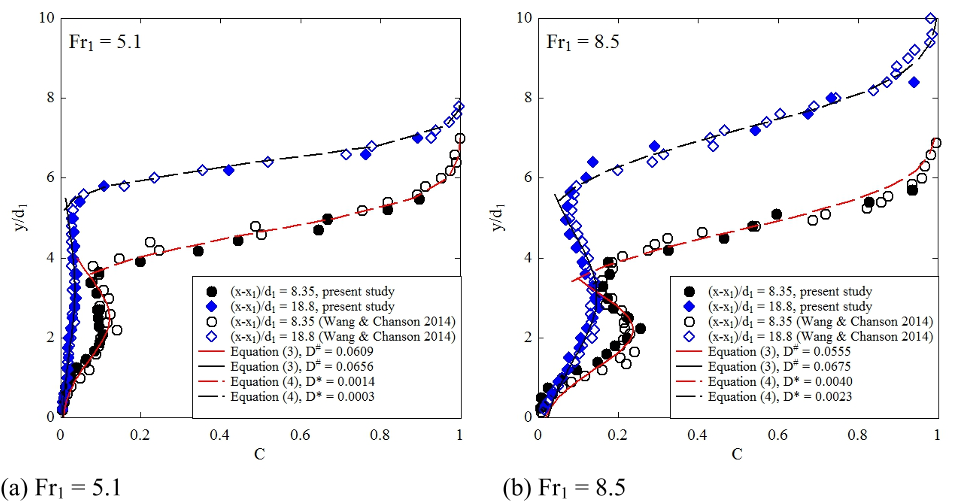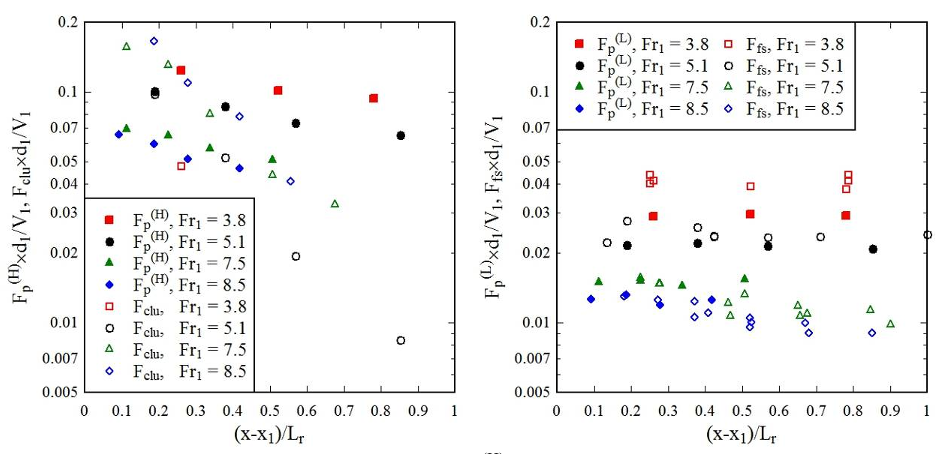




Did you find this useful? Give us your feedback
























131 citations
66 citations
40 citations
35 citations
...Further observations include the integral turbulent length scale Lt characterising the size of large turbulent eddies advecting the bubbles in the hydraulic jump roller [34, 179]....
[...]
31 citations
...This relatively low sample rate would lead to an underestimate of bubble count rate when the Reynolds number was high [43]....
[...]
52 citations
...A number of studies contributed to the pressure quantification mainly beneath hydraulic jumps (Vasiliev and Bukreyev 1967; Schiebe 1971; Abdul Khader and Elango 1974; Lopardo and Henning 1985; Fiorotto and Rinaldo 1992; Lopardo and Romagnoli 2009). The relationship between cavitation occurrence and pressure fluctuations was investigated (Narayanan 1980). The pressure fluctuations were further correlated with water level fluctuations and/or velocity turbulence in some limited flow conditions with minor aeration (Onitsuka et al. 2009; Lopardo 2013). In most prototype conditions with large inflow Froude number, the air entrainment in hydraulic jump is significant. Air entrapped at the jump toe as well as through the rough roller surface is advected downstream by large vortical structures (Long et al. 1991). The diffusive advection of air bubbles interplays with the turbulence development. The studies of two-phase flow properties were represented by Rajaratnam (1962), Resch and Leutheusser (1972) and Chanson (1995) describing the air concentration and interfacial velocity characteristics using air–water interface detection techniques....
[...]
...(10) assumes implicitly a hydrostatic pressure distribution in the roller, following limited time-averaged bottom pressure data sets (Rajaratnam 1965; Abdul Khader and Elango 1974; Fiorotto and Rinaldo 1992)....
[...]
...A number of studies contributed to the pressure quantification mainly beneath hydraulic jumps (Vasiliev and Bukreyev 1967; Schiebe 1971; Abdul Khader and Elango 1974; Lopardo and Henning 1985; Fiorotto and Rinaldo 1992; Lopardo and Romagnoli 2009)....
[...]
50 citations
...Wang et al. (2014) identified the respective contributions of fast and slow turbulent motions by decomposing the phase-detection signal into the mean, low-frequency and high-frequency components....
[...]
...The formation of large turbulent structures was linked to the oscillations of jump toe position and free-surface fluctuations (Long et al. 1991; Wang et al. 2014)....
[...]
...The turbulence characterisation was promoted by Chanson and Toombes (2002) and Chanson and Carosi (2007) and recently developed by Wang et al. (2014) based upon statistical analysis of interface detection signals....
[...]
...The difference between Tu00 and Tu indicated considerable impact of slow fluctuating motions of the flow on the turbulence characterisation (Wang et al. 2014)....
[...]
49 citations
...The formation of large turbulent structures was linked to the oscillations of jump toe position and free-surface fluctuations (Long et al. 1991; Wang et al. 2014)....
[...]
...Wang et al. (2014) identified the respective contributions of fast and slow turbulent motions by decomposing the phase-detection signal into the mean, low-frequency and high-frequency components....
[...]
...a Hydraulic jump downstream of a salt water intrusion prevention weir at Jungmun, Jeju Island, Korea (2013). b Experimental hydraulic jump in horizontal rectangular channel. Flow from left to right. Flow conditions: Q = 0.0461 m(3)/s, d1 = 0.032 m, x1 = 1.25 m, Fr1 = 5.1, Re = 9.1 9 10 4 Exp Fluids (2014) 55:1847 Page 3 of 16 1847...
[...]
...The turbulence characterisation was promoted by Chanson and Toombes (2002) and Chanson and Carosi (2007) and recently developed by Wang et al. (2014) based upon statistical analysis of interface detection signals....
[...]
...The difference between Tu00 and Tu indicated considerable impact of slow fluctuating motions of the flow on the turbulence characterisation (Wang et al. 2014)....
[...]
42 citations
...In the present study, the experiments were performed in a relatively large-size facility to minimise scale effects (Murzyn and Chanson 2008; Chanson and Chachereau 2013)....
[...]
41 citations
...The data fitted a Gaussian error function (Brattberg et al. 1998; Murzyn et al. 2005):...
[...]
...The data fitted a Gaussian error function (Brattberg et al. 1998; Murzyn et al. 2005): C ¼ 1 2 1þ erf y Y50 2 ffiffiffiffiffiffiffiffiffiffiffiffiffiffiffiffiffi D x x1ð Þ V1 q 0 B @ 1 C A 0 B @ 1 C A y [ y ð4Þ where Y50 is the characteristic elevation in the free-surface region with C = 0.5 and D*…...
[...]